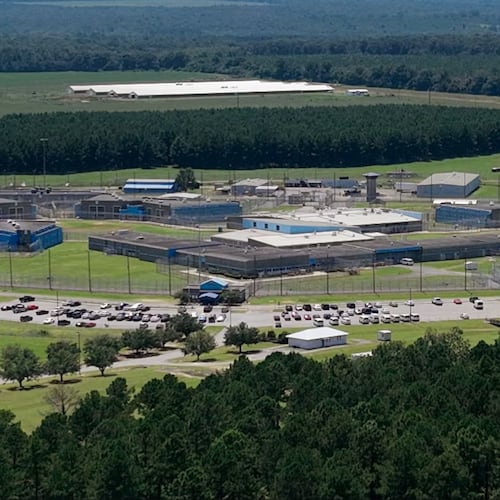When American Medical Response stops providing ambulance service for 200,000 residents in south Fulton County Sunday, two months earlier than originally expected, Grady EMS will be ready to step in, officials say.
Grady EMS will bring in employees from outside metro Atlanta, and partner with four other ambulance providers and two cities, to ensure it has enough workers when it becomes the ambulance service provider at 12:01 a.m.
Grady has so far hired between 30 and 45 of the 150 people it needs to fully staff the area. So Bill Compton, the senior vice president of emergency medical service, said the ambulance provider will bring more than 30 full-time and part-time Grady EMS employees from the counties around Milledgeville and Albany to fill the gaps while hiring continues.
Full-time employees either work three days on, four days off, or one day on, two days off, so they will be able to work in south Fulton while keeping their other jobs, Compton said. Full- and part-time employees will be housed by Grady and paid a per diem while they are in south Fulton, in addition to their salaries.
No EMS employees will come from Atlanta, where Grady also provides ambulance service. Atlanta officials had expressed concern that employees would be shifted from the city, hurting response times there. Compton said resources won’t be shared between Atlanta and south Fulton.
To manage the remaining gaps, Grady is subcontracting with MetroAtlanta, AmeriMed, Procare and AmeriPro ambulance services to cover some areas. The cities of Chattahoochee Hills and Palmetto are also working together to provide a ambulance for transporting patients.
Grady had originally expected to take over ambulance service from AMR Sept. 1. But in a letter to the State Department of Public Health, representatives from AMR said they intended to hand over the service earlier: July 1 for Union City, Fairburn, Chattahoochee Hills, Palmetto, the city of South Fulton and unincorporated Fulton County and July 31 for East Point and College Park.
“It put some additional challenges on us,” Compton said of the timeline.
Still, Compton said, Grady would be able to provide ambulance service, and would still guarantee that emergency response times will be nine minutes or fewer. Those making non-emergency calls for service will wait longer.
Compton had expected to keep AMR’s employees in the area. But very few opted to leave AMR, which has said it has no plans for layoffs. Instead, Grady has had to recruit and often train new workers.
Larry Few, the fire chief in the city of South Fulton, said he was confident that Grady would be able to handle the call volume — about 30,000 calls a year by Compton's estimate, with July 4 being one of the busiest times. AMR had struggled to provide 12-minute response times, Few said.
“When you’re switching over and a new system is coming online, there may be some hiccups,” Few said. But Grady has “been doing this a very long time. I expect the very best quality of service.”
By September, Grady expects to be running 15 ambulances, with two spares available in case there are mechanical or other issues. Henry Argo, the Palmetto fire chief, said he was “very confident” in Grady’s plans. His city will help staff a Chattahoochee Hills ambulance for transport as needed until September.
He said Compton and others had been forthcoming about answering his questions, and said Grady was “fully engaged” in the transition.
“All of us, of course, want it to work flawlessly,” Argo said. “I think we may see better response times than we’ve historically seen.”
Compton said Grady has already invested $3 million in new ambulances and in leasing a former car dealership in Union City to house those vehicles.
In addition to ambulance services, Grady this fall expects to have nurse practitioners respond to some less urgent calls in mobile integrated health units. Using them to respond to low-level calls, like sore throats, will free up ambulances to ensure better response times for real emergencies, Compton said.
While he would have liked more time to get fully staffed, Compton said the transition of ambulance services would be smooth.
“Resource-wise, we’re right where we need to be,” he said. “We always had a contingency plan in place. We’re not really in a quandary.”
About the Author
Keep Reading
The Latest
Featured





